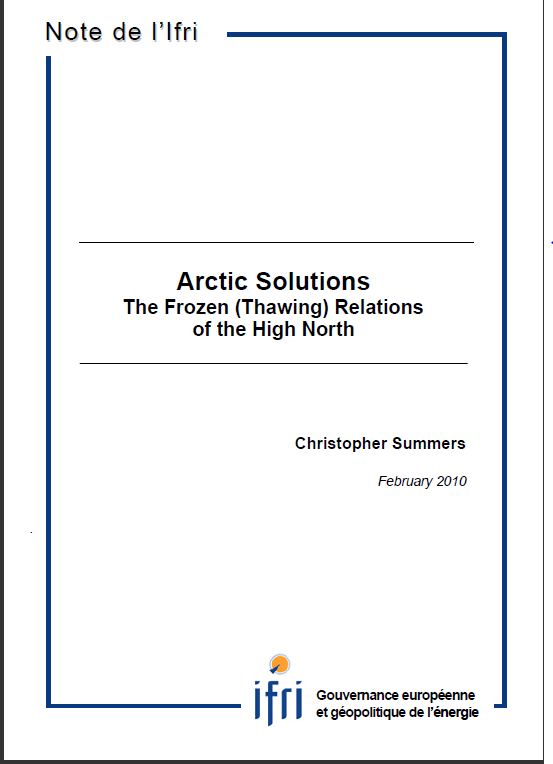Arctic Solutions: The Frozen (Thawing) Relations of the High North

It’s cold, inhospitable and deadly. The image of the Arctic in years past is one of bewilderment, ignorance and awe. How the image of the Arctic has changed in recent years can be directly linked to our recognition that the Arctic has a great deal to offer in meeting the basic needs of future generations.
Although we are still in awe of the Arctic’s cruel beauty, new technologies are making it easier to explore the once unmanageable environment. The Arctic has moved into the mainstream with a host of suitors jockeying for position in the race to possess the Arctic and all that it contains. To highlight this increased interest, Russia’s „National Security Until 2020‟ initiative, has upgraded the High North to one of Russia’s main priorities and identifies the Arctic as liable to produce military conflict in the future linked to competition for the Arctic’s abundant raw materials. Even Canada, a peaceful and respectful country, has stepped outside the box of traditional Canadian rhetoric by giving Canada’s Northern Strategy a tagline: “Our North, our heritage, our future”. The Arctic is increasingly viewed as central to meeting the challenges of an ever changing world where climate change and economic benefit drive international agreements and policies. However, Canada and Russia are not the only actors here. The other Arctic Five states: Denmark, Norway, and the United States of America all lay claims to some area or activity within the Arctic region. The Arctic is a unique part of this world, one that has been left largely untouched by human hands, and one that is on the brink of being changed forever.

Available in:
Regions and themes
ISBN / ISSN
Share
Download the full analysis
This page contains only a summary of our work. If you would like to have access to all the information from our research on the subject, you can download the full version in PDF format.
Arctic Solutions: The Frozen (Thawing) Relations of the High North
Related centers and programs
Discover our other research centers and programsFind out more
Discover all our analysesAI, Data Centers and Energy Demand: Reassessing and Exploring the Trends
The information and communication technologies sector today accounts for 9% of global electricity consumption, data centers for 1-1.3%, and artificial intelligence (AI) for less than 0.2%. The growing energy demands of cloud services first, and now AI workloads (10% of today’s data centers electricity demand), have exacerbated this trend. In the future, hyperscale data centers will gain shares amongst all kinds of data centers and AI will probably account for around 20% of data centers electricity demand by 2030.
Unlocking India’s Energy Transition: Addressing Grid Flexibility Challenges and Solutions
India is rapidly scaling up its renewable energy (RE) capacity, adding 15–20 GW annually, but the ambitious goal of 500 GW of non-fossil capacity by 2030 is at risk unless the pace accelerates.
Europe’s Black Mass Evasion: From Black Box to Strategic Recycling
EV batteries recycling is a building block for boosting the European Union (EU)’s strategic autonomy in the field of critical raw minerals (CRM) value chains. Yet, recent evolutions in the European EV value chain, marked by cancellations or postponements of projects, are raising the alarm on the prospects of the battery recycling industry in Europe.

The New Geopolitics of Energy
Following the dramatic floods in Valencia, and as COP29 opens in Baku, climate change is forcing us to closely reexamine the pace—and the stumbling blocks—of the energy transition.







